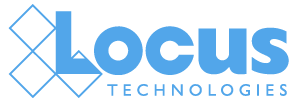Better Tools for Remediation Projects
When looking for a GHG reporting program, there is one element that is typically overlooked. This short video gives us more insight.
When looking for a GHG reporting program, there is one element that is typically overlooked. This short video gives us more insight.
When looking for a GHG reporting program, there is one element that is typically overlooked. This short video gives us more insight.
When looking for a GHG reporting program, there is one element that is typically overlooked. This short video gives us more insight.
When looking for a GHG reporting program, there is one element that is typically overlooked. This short video gives us more insight.
When looking for a GHG reporting program, there is one element that is typically overlooked. This short video gives us more insight.
Scientific calculations are an essential aspect of many fields of study, including physics, chemistry, and engineering including environmental engineering. These calculations involve complex formulas and equations that are often too time-consuming and challenging to solve by hand. Fortunately, programming languages and software have made it easier for scientists and researchers to carry out scientific calculations quickly and accurately. Software plays a vital role in environmental calculations, as it provides scientists and researchers with a powerful tool for analyzing and interpreting complex data related to the environment. Environmental engineers need to deal with vast amounts of data that must be analyzed to draw meaningful conclusions. The environmental field encompasses a wide range of disciplines, including climate science, ecology, and environmental engineering, and each of these areas requires specific types of calculations that can be performed more efficiently and accurately using computers.
In recent years, many programming languages have been developed that are specifically designed for scientific computing. These languages, such as MATLAB, Python, and R, are powerful tools for numerical analysis and data visualization. However, programming for environmental calculations poses some challenges. One of the primary challenges is ensuring that the code is accurate and reliable. Even small errors in the code can lead to significant errors in the results, which can have serious consequences for environmental decision-making.
Collections of environmental data in an enterprise pose another set of challenges, including gathering data from all business units and ensuring the accuracy, accessibility, interoperability, and privacy of data. Addressing these challenges requires careful planning, collaboration, and the adoption of standardized data formats and protocols.
Software applications developed at Locus like Environmental Information Management (EIM), Greenhouse Gas, Air Emissions and Sustainability address these challenges by offering tailored solutions for environmental scientists. One of the key advantages of using these applications is that it allows scientists to automate many of the tedious and time-consuming tasks involved in data collection, scientific calculations, analysis, and regulatory reporting. These applications have gone through extensive testing ensuring accurate and reliable results and the automation can make regulatory reporting a breeze when time is of the essence.
In conclusion, scientific calculations are an essential aspect of environmental engineering, and Locus offers powerful tools for performing these calculations quickly and accurately. By using Locus software, scientists and researchers can automate tedious tasks, process large datasets, and extract valuable insights from the environmental data of the organization.
When looking for a GHG reporting program, there is one element that is typically overlooked. This short video gives us more insight.
When looking for a GHG reporting program, there is one element that is typically overlooked. This short video gives us more insight.
Todd Pierce explains in this short video how Locus Technologies data portability can be available for all your data needs.
Todd Pierce explains in this short video how Locus Technologies data portability can be available for all your data needs.
Locus Technologies » Services » Page 11
299 Fairchild Drive
Mountain View, CA 94043
P: +1 (650) 960-1640
F: +1 (415) 360-5889
Locus Technologies provides cloud-based environmental software and mobile solutions for EHS, sustainability management, GHG reporting, water quality management, risk management, and analytical, geologic, and ecologic environmental data management.
